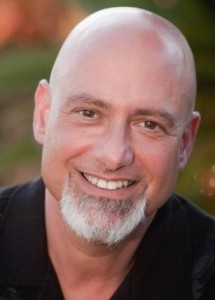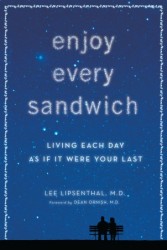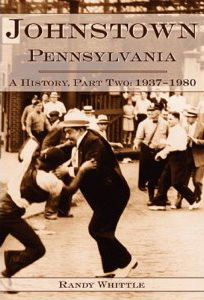After having returned from the Ornish Coronary Artery Disease Reversal program in Sausalito, California, my life, my mental health, and my view of healthcare had been changed forever. Having previously been selected as the CEO of a traditional hospital that, like all hospitals, was all about sickness, I now realized I had new tools in my toolbox, new arrows in my quiver, and new eggs in my basket. . . you get the idea.
That workshop had taught me that there is no one right way to go through life, to achieve a better quality of life, to deal with health issues, and to survive this journey. I came home armed and informed that sickness could be stopped or reversed, and this concept did not just apply to heart disease. There was significant evidence that Type 2 diabetes, some autoimmune diseases, erectile dysfunction, some prostate cancers and other diseases could be positively impacted by diet, exercise, stress management and group support.
As Americans in one of only two developed countries that permits advertising of pharmaceutical products on our air waves, we had been carefully trained, pruned, mentally shaped and, if you will, brainwashed to believe in the “heal to the pill” method of care. We get sick, go to the doctor or hospital, are prescribed pills, and move on. Or we get a shot, or get the offending body part cut out, and life goes on, or not. Those were the options previously permitted on the proverbial healthcare menu.
It was only a few years later when the chief scientific officer of a major drug company explained his world to me like this, “You don’t understand the pharmaceutical industry. We’re like the movie business. We only want the blockbusters. We want to give you a pill that you’ll have to take from the time you’re five until you die at 75 or 80 that will never make you better. It will just help control the symptoms.”
In 1987, I was working toward another Masters Degree at Carnegie Mellon University, and our epidemiology professor challenged us to find something that would significantly alter the health, lives, or future of at risk people in our hospital’s catchment area. I decided to have our physicians give pneumococcal (pneumonia) vaccines to our at-risk senior population.
When I told my CEO of that plan, he suggested I present it to the primary care physicians at their monthly meeting. I boldly stood in front of a room full of internal medicine and family practice physicians and made my pitch. You would have thought I asked them to bring in their first born child to be assassinated. I was very nearly strung up. I heard cries like, “How are we supposed to pay or bills? How can we pay off our loans? What am I supposed to do, pull my kids out of college? Treating those patients is how we make our livings.”
Ironically, in 2017, I found myself in front of the leadership of a major health system with 125 cardiologists, and I informed them we were going to enter into the coronary artery disease reversal program. The spokesperson for the group put up his hand and said, “Let’s talk about the elephant in the room, do we really want these people to get better?”
Bottom line, we have created a medical industrial complex that is dependent upon sickness, and what I had learned in California was, “Yes, we’re all going to eventually die, but why not give your body a chance and live as healthy as you can for as long as you can?”
Interestingly, the Ornish program was not yet being offered in many places in the country, and when I asked if we could bring it to Western Pennsylvania, there was a long pause on the other end of the line, and Dr. Ornish asked,”What do you want?” He explained that he was working on a licensing project with our local Blue Cross, and I was not going to be able to bring it into my hospital, but that didn’t stop me.
We worked out a deal with some local churches to bring elements of the program that were available to the public just to test the water. Within weeks, we had heart disease participants in their 60’s, 70’s, and 80’s doing stretching exercises, meditation in whatever form they selected, nonjudgmental group support, and vegetarian covered dishes to church halls and basements.
The amazing thing about this program was that people who were suffering from angina pectoris (chest discomfort) found relief in sometimes less than a few weeks. They were no longer living in fear of dropping dead, and more importantly, they were taking control of their life without having to be afraid of the outcome. It was giving their bodies a chance to do what those bodies are so great a doing, healing.
Of course no good deed goes unpunished, and those non-believers, or those individuals who were potentially most negatively impacted by a health and wellness program began to identify me as a zealot, a fanatic, a vegetarian warrior. I was openly mocked at board and physician meetings when I ate my specially prepared vegetarian meals, and when I started holding meetings on the indoor track we had created with our new wellness center, those who would not benefit from my new found center for wellbeing went on a mission to discredit these ideas.
At one point the powerful head of a local Baptist Church began to take steps to have various conservative sects actually picket our hospital for teaching yoga and trying to take away the souls of our participants. (Their interpretation of yoga.) One of our powerful physicians sent emails on a regular basis to our staff with the intention of discrediting me and my programs for wellness and prevention. It was not unlike Salem, Massachusetts for a few years. Then something incredibly powerful occurred.
I was, for only the second time in my 30+ year career in hospital administration, invited to have dinner at a physician’s home. At that dinner, I was seated beside our local congressman, John P. (Jack) Murtha. The host’s wife did not know what to prepare for my meal so she gave me a large white plate with two egg whites on it. When the Congressman saw it, he asked, “What the heck is wrong with you?” I carefully explained my experiences in California with heart disease reversal, meeting patients who had successfully stopped and or reversed their disease, and how well they were living. He leaned back and said, “We’re spending a billion dollars a year on heart disease in the military. Maybe if you got to Bethesda or Walter Reed and find someone who would work with you, I might be able to help>”
We knew that his 25 plus years in Congress had given him some seniority, but what I didn’t realize was that he was in charge of the subcommittee on appropriations for the department of defense. His committee was responsible for well over $300B dollars of government spending. Well, my board chair was a former Navy airman and he flew me to Bethesda where we met with and were politely turned down by the Navy. A few months later when I was in D.C. for a meeting, I got in a cab and, without any knowledge of military life, command, or structure, I showed up at the front door of Walter Reed Army Military Hospital which became Walter Reed National Military Medical Center Bethesda several years later.
When I walked inside, I saw hundreds of soldiers, family members, and medical personnel, but I didn’t have an appointment. Consequently, I walked up to the first white coat I saw, explained who I was, where I was from, and who had suggested I come there. Serendipitously, he was the only physician who had ever received a federal earmark and it was about $75M from Senator Ted Stevens of Alaska to create a center for the study of prostate cancer. He looked at me, smiled, and said, “Follow me.”
After meeting with a Walter Reed cardiologist, I went home, wrote a white paper, and several months later we established two Ornish Centers, one at Walter Reed and one at Windber with a grant that was made possible through Congressman Murtha. The reason you need to understand this back story is that without these grants, there would have been no way a hospital our size could have supported a program featuring integrative medicine.









